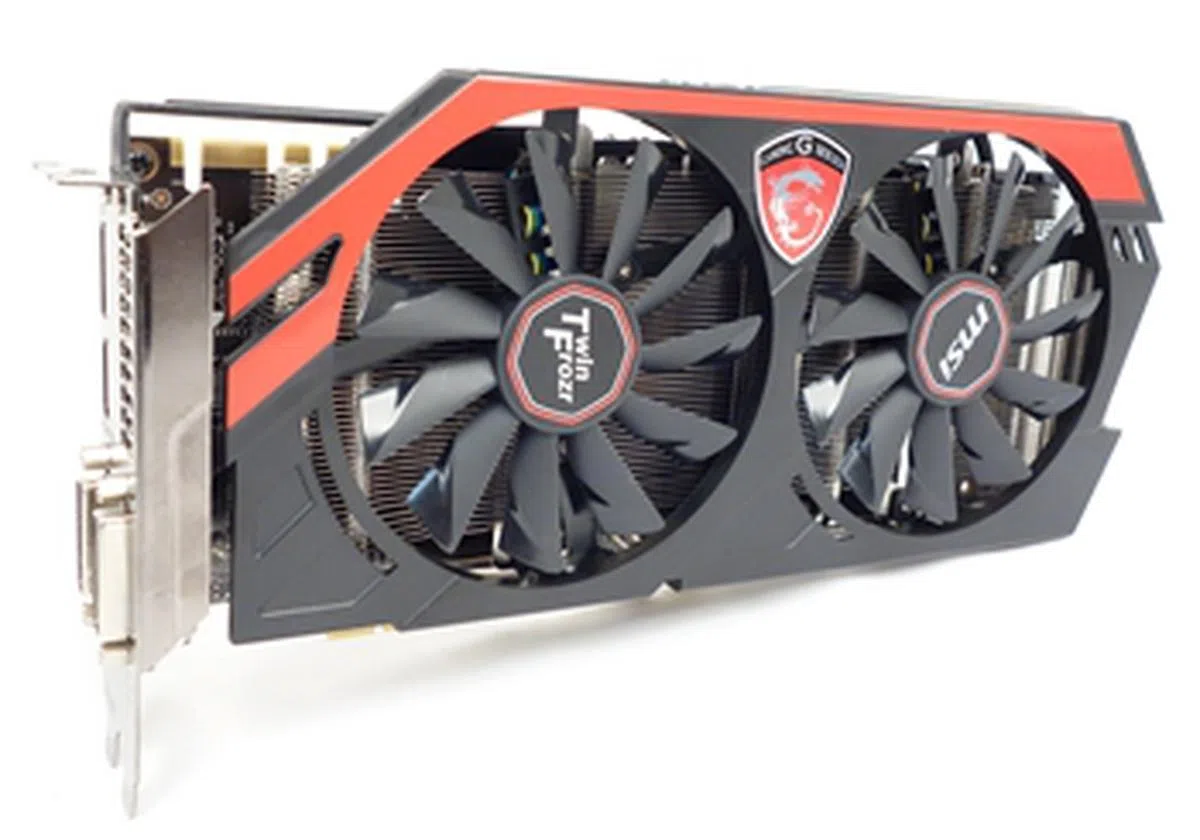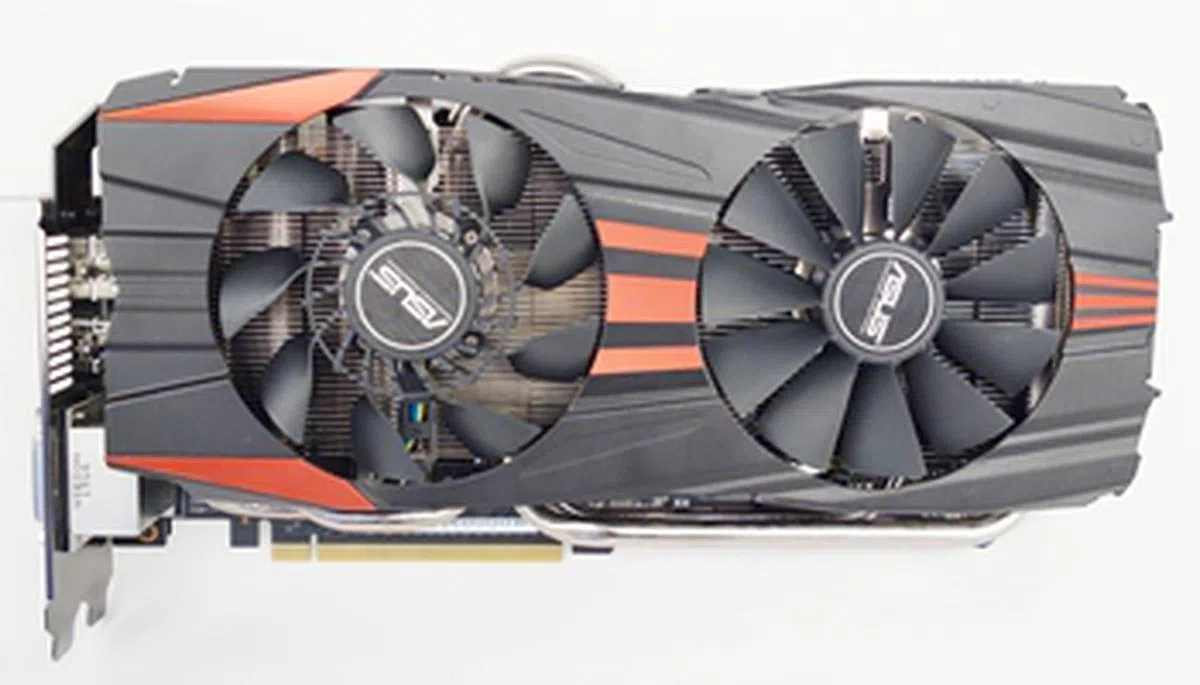NVIDIA GeForce GTX 780 Showdown - ASUS and MSI
The GeForce GTX 780 is positioned as a more powerful update to the GTX 680, and it offers a value proposition to system builders who aspire to own a GTX Titan. We pit two custom cards from ASUS and MSI; we even assess their performances in a 2-way SLI configuration! So step right in to find out how they fared.
By Wong Chung Wee -
NVIDIA GeForce GTX 780 Showdown - ASUS and MSI
In May this year, NVIDIA launched the GeForce GTX 780 that sports the same GK110 GPU as the top-of-the-line GeForce GTX Titan. The GTX 780 is targeted at gaming enthusiasts and performance seekers who are looking to upgrade from the GTX 680. In terms of pricing, the add-on partners' GTX 780s are priced at roughly S$980, making them approximately 35 percent cheaper than the GTX Titan. From our experience with a custom GTX 780 card, such as the Gigabyte GeForce GTX 780 Windforce 3X OC, the GTX Titan only offers slim winning margins in terms of benchmark performance.
This time round, we've decided to take things up a notch to see if their standing change if we test them in a 2-way SLI configuration. And to double the fun, we called in two different pairs of custom GeForce GTX 780 graphics cards to see if there's any difference to be expected. The first contender is the ASUS NVIDIA GeForce GTX 780 DirectCU II 3GB GDDR5 and the other is the MSI NVIDIA GeForce GTX 780 Twin Frozr Gaming 3GB GDDR5. At the same time, we will also find out how the two custom cards stack up against each other.

ASUS GeForce GTX 780 DirectCU II 3GB GDDR5
Before we start off with the performance checks, we share a little more about each contender. The ASUS GTX 780 card is slightly overclocked at 889MHz, which is an increment of 26MHz over the base clock of 863MHz of the reference GTX 780. The card sports the DirectCU II cooler with a CoolTech fan that was first seen when we reviewed the ASUS GeForce GTX 670 DirectCU Mini OC graphics card. For its power regulation system, the card features a 10-phase Digi+ system to ensure overall stability.

The ASUS GeForce GTX 780 card features its custom DirectCU II cooling system. It has been enhanced with the presence of a CoolTech fan (which sits over the GPU area), together with a regular 80mm cooling fan.


The rear of the card features a back plate that offers some protection to the electrical contacts found at the rear of the card's PCB, supposedly helps to dissipate heat and prevents the card from getting warped.

The rear video connectivity ports of the ASUS GTX 780 card include two DVI ports, one HDMI port and one DisplayPort output.
From the bottom view, we can see four 10mm thick copper heatpipes that snake out from the DirectCU II cooler. The pipes have direct contact with the GK110 GPU for better cooling. There is another one that is only visible from the top view of the card.

We can see the four 10mm copper heatpipes that are in direct contact with the GPU of the ASUS GTX 780 card.

The single heatpipe that is visible from the top view of the ASUS card.
MSI GeForce GTX 780 Twin Frozr Gaming 3GB GDDR5 OC
This GeForce GTX 780 card from MSI features the unique color scheme from its Gaming series. The card also boasts of higher clock speeds than the ASUS one; with its GPU core clocked at a base of 902MHz, which is 13MHz, or about 1.5 percent higher than that of the ASUS GTX 780. The MSI card also boasts of an improved Twin Frozr IV cooler with an enhanced heatsink that features larger surface area for better heat dissipation.
What's special with the MSI GeForce GTX 780 Gaming is that it includes MSI's Gaming App tuning utility which enables gamers to toggle between high-performance OC, Gaming, and Silent modes which boost the clock speeds up/down appropriately. The differences are listed in the specs comparison on the following page. The default out of the box performance uses the Gaming mode which clocks the GPU at the reported 902MHz, which is what we'll be testing the card as to determine how it handles from a baseline perspective without tweaking.

The MSI NVIDIA GeForce GTX 780 Twin Frozr Gaming sports the unique color scheme of its Gaming series.

The rear of the MSI GTX card doesn't feature any back plate; hence, we have a clear view of the brown PCB and the memory chips.

The MSI GTX 780 card's PCB is a light brown color and it doesn't have a back plate like the ASUS card.
The rear video ports are the same as the reference NVIDIA GeForce GTX 780 card; a pair of DVI ports, one HDMI port and one DisplayPort output.

The rear video connectivity ports of the MSI GTX 780 card. The view here is almost identical to the ASUS card, save for the wave pattern of the vents and the embossed MSI logo, found on the rear back plate.
From the bottom of the card, we can see four nickel-plated copper heatpipes that draw heat from the GPU to the heatsink. There is another heatpipe that is visible from the top view.

Looking at the bottom of the card, we see four copper heatpipes that draw heat away from the GPU.

We can see the lone heatpipe from the top of the card.
Test Setup
Here are the specifications of our graphics test bed we'll be running with:
- Intel Core i7-3960X (3.3GHz)
- ASUS P9X79 Pro (Intel X79 chipset) Motherboard
- 4 x 2GB DDR3-1600 G.Skill Ripjaws Memory
- Seagate 7200.10 200GB SATA hard drive (OS)
- Western Digital Caviar Black 7200 RPM 1TB SATA hard drive (Benchmarks + Games)
- Windows 7 Ultimate 64-bit SP1
Here's the list of cards and configurations that we'll be testing.
- ASUS GeForce GTX 780 DirectCU II 3GB GDDR5 (ForceWare 320.49)
- ASUS GeForce GTX 780 DirectCU II 3GB GDDR5 2-way SLI (ForceWare 320.49)
- MSI GeForce GTX 780 Twin Frozr Gaming 3GB GDDR5 (ForceWare 320.49)
- MSI GeForce GTX 780 Twin Frozr Gaming 3GB GDDR5 2-way SLI (ForceWare 320.49)
- NVIDIA GeForce GTX Titan 6GB GDDR5 (ForceWare 320.49)
- NVIDIA GeForce GTX Titan 6GB GDDR5 2-way SLI (ForceWare 320.49)
Note 1: In our performance testing, we left the default temperature ceiling at 80 degrees Celsius as most users would leave it as default. Only in our overclocking exercise did we increase the power target at 104 per cent and our temperature target was automatically raised to 89 degrees Celsius.
Note 2: We also configured the cards in a 2-wal SLI configuration in order to see how the custom GTX 780 cards scaled accordingly (if any). Correspondingly, we've tested a pair of GTX Titans in the same configuration. This is to ascertain if the value proposition of the GTX 780 cards still stand, even if you have a pair of them in a SLI configuration.
Here's a look at how the custom GTX 780 cards stack up against the GTX Titan and the reference GTX 780:
[hwzcompare]
[products=410902,399631,393642,373666]
[width=175]
[caption=NVIDIA GeForce GTX 780 Customs Cards and competitive SKUs compared]
[showprices=0]
[/hwzcompare]
Benchmarks
For this comparison, we'll be focusing on the overclocking upside, temperature performance, power consumption and their 2-way SLI configuration performance of our custom cards. The comparison GeForce GTX Titan was also tested in all of these aspects. As such, we've streamlined our benchmarks to highlight these specific differentiated aspects. For a full set of benchmark results for the GTX 780, and the GTX Titan, please refer to our earlier reviews of the reference NVIDIA GeForce GTX 780 and the NVIDIA GeForce GTX Titan respectively. Here's the streamlined benchmark list:-
- Futuremark 3DMark 2013
- Crysis 3
- Overclocking (Futuremark 3DMark 2013)
- Temperature
- Power Consumption
3DMark (2013) Results
We put the cards through the grueling benchmarks of the 3DMark (2013) Fire Strike with extreme levels of tessellation and volumetric illumination, as well as complex smoke simulation using compute shaders and dynamic particle illumination. The Fire Strike Extreme tests will tax the cards further with more tessellation, more particle effects and more taxing DirectCompute calculations.
The MSI GeForce GTX 780 Twin Frozr VI Gaming is a clear winner against the ASUS card, due to its higher clock speed. As a single card, its gains over the ASUS GeForce GTX 780 DirectCU II OC are in the range of 3- to 3.2%. In the 2-way SLI configuration, the MSI cards' gains were in the range of 1.9- to 2.10 percent.
When the leading card was pitted against the Titan, for the Fire Strike test, the Titan pulled ahead by slightly over 6 percent, and in the 2-way SLI configuration, the Titans' gains were reduced to 3.82%. For the more demanding Fire Strike Extreme, its gains, when the cards were in SLI configuration, were pared to just 1.9 percent. As a single card, the Titan's gain was about 5.6 percent, which was somewhat in line when we last tested in an older article.

Crysis 3 Results
In order to gauge their in-game performance, we put the cards through the paces of Crysis 3. With its extreme amounts of tessellation, per-pixel per-object motion blur, Bokeh Depth of Field, displacement mapping, particle and volumetric lighting and fog shadows, this is graphically demanding benchmark.
In its 2-way SLI configuration, the ASUS GeForce GTX 780 cards pulled surprisingly pulled up ahead of the MSI GTX 780 and reference GTX Titan cards. At the resolution of 2560 x 1600 pixels, the ASUS cards managed to pull ahead of the Titans by just a hair! As single cards, the custom GTX 780s and the GTX Titan were almost running neck-to-neck at both resolutions.

Overclocking Results
As a single card, the ASUS GeForce GTX 780 card was the winner, and we managed to overclock its GPU to 1055MHz, and for its video memory, it was overclocked to 6468MHz. For the MSI card, we managed to overclock it to 1058MHz, while its video memory was pushed to an operating frequency of 6456MHz. Though the latter card was pushed to higher clock speeds, it was the ASUS card that managed to outperform the MSI one, with a very slim margin that ranged from 0.77- to 0.84%.
In our 2-way SLI testing, it was the MSI cards that claimed victorious, leading the ASUS pair by margins that ranged from 0.75- to 1.4 percent. When compared to the Titan, the overclocked GTX 780 customs cards outperformed it on both fronts; as a single card and in 2-way SLI configuration. Generally speaking, they outperformed the stock Titan in the range of 4 to 11% in their overclocked states.
Temperature Results
The custom cooler of the ASUS GTX 780 card proved to be extremely effective in cooling the card. It had the lowest operating temperature at just 46 degrees Celsius! While under load in 2-way SLI configuration, it also had the second lowest temperature of 73 degrees Celsius. This was because the pair of Titans recorded an even lower operating temperature at 70 degrees Celsius. Their lower operating temperatures were also due to their lower clock speeds of their GPUs. The MSI GTX 780 card has the highest clock speed of 902MHz; while ASUS is rated at 889HMz, and the reference GTX Titan is rated at 836MHz. Surprisingly, the temperature results across the board seem much lower than anticipated with the latest driver set, but we're still in the midst of verifying if they are the main reason. In any case, the relative standings are looking positive for ASUS.

Power Consumption Results
At its idle state, the MSI's GeForce GTX 780 card surprisingly drew the least power at 145W, but under load, its power consumption level shot up to 426W. The ASUS GeForce GTX 780 had the lowest power consumption levels under load, as a single card as well as in 2-way SLI configuration. The outcome is very likely due to the lower clock speeds of the ASUS card, but it's still nevertheless overclocked and from what we've tested before, the reference card actually reported higher temperatures that matched the MSI graphics card. Oddly, the ASUS card registered the highest power draw at idle. Meanwhile, power consumption profiles of the MSI GeForce GTX 780 and the reference GeForce GTX Titan were rather similar during our testing.

Conclusion
The add-in partners' NVIDIA GeForce GTX 780 cards are nothing short of impressive. In terms of performance on the single card platform, the MSI GeForce GTX 780 Twin Frozr VI Gaming comes out ahead due to its slightly higher clock speed of its GK110 GPU. In fact, the card's full potential is unleashed under OC mode, which is faster than the default Gaming mode. Expect its OC mode to inch a few percent better than what we've reported. However, with reference to our power consumption and temperature tests, the ASUS NVIDIA GeForce GTX 780 DirectCU II impressed us with its power efficiency, and its DirectCU II cooling system's capabilities. Its operating temperatures were much lower than the MSI card. This fact was underscored even when the cards were in 2-way SLI configuration. In terms of overclocking performance, the single ASUS card was only slightly better than its MSI counterpart. The tables were turned when we checked their overclocking prowess as the MSI cards found strength in numbers when working as a pair and managed to outperform the overclocked ASUS pair by a small margin.

Choosing the ideal card is tough given the strong performances of the cards; as a single card, and in 2-way SLI configuration. Collectively, they showed their mettle against the more powerful GeForce GTX Titan cards.
In their overclocked states, the GeForce GTX 780 cards outperformed the GTX Titan. Seeing that this was how things panned out earlier on as well, the value proposition of GTX 780 over the GTX Titan has been cemented once again. The main advantage of the GTX Titan's 6GB video frame buffer that will prove useful in a multi-display setup to support extremely high resolutions. The Titan also boasts of more CUDA cores than the GTX 780; however, from our benchmarks, we have seen that this advantage of the Titan doesn't translate to solid gains in gaming experience. It's no wonder NVIDIA has been busy marketing the Titan to professionals and home workstation needs which can also double up for gaming if required.
Overall, it was very difficult to pick a clear victor from this comparison as both GeForce GTX 780 cards are excellent choices. The ASUS GeForce GTX 780 DirectCU II graphics card was slightly overclocked out of the box, so its standalone performance was trailing when compared to the MSI card. Its impressive showing for the power consumption and temperature tests made it stand out, and the same can be said of its overclocking performance. For our in-game Crysis 3 test, the SLI performance of the pair of ASUS cards was also a tad better than the MSI pair. The ASUS card retails for S$979 and a pair of them will cost S$1,958.
The MSI card managed a higher overclocked GPU core, making it a leader in single card testing. It consumed more power, and ran hotter than the ASUS card, but it has the ability to perform a few percent faster than the reported results in its official OC mode without voiding its warranty. As a pair in SLI configuration, it outperformed the ASUS cards on most fronts, except for the Crysis 3 test. The MSI card retails for S$959, while a pair of them will cost S$1,918.
In the end, we couldn't really clearly pick the better card and we feel both of them should deserve your attention as they each excel in their own way. From a suggested retail price point of view, the MSI card come off as the card with a slightly better value.
Our articles may contain affiliate links. If you buy through these links, we may earn a small commission.


